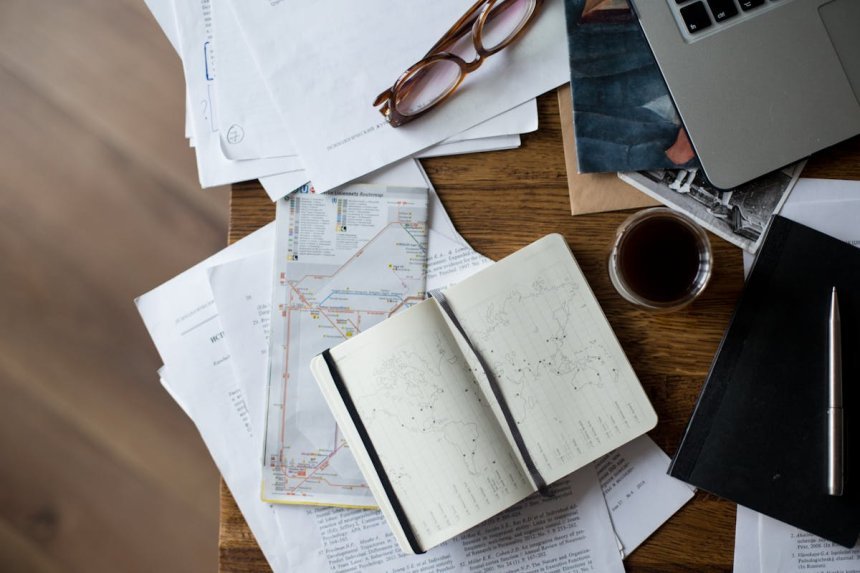How to study with mind maps?
Mind maps are great study tools for those who are going to take the exam and other entrance exams of an interpretative nature. Since the exam requires the student to be able to read and associate, this study method can be the key to developing their skills.

Anyone preparing for the exam knows how extensive the content is. To cover all the topics on the entrance exam, you need to find methods to optimize your studies and enhance the learning process. Using a mind map to study promises to bring more efficiency and practicality to your preparation routine.
Mind maps are great study tools for those who are going to take the exam and other entrance exams of an interpretative nature. Since the exam requires the student to be able to read and associate, this study method can be the key to developing their skills.
If you want to learn how to use this resource to get your dream university spot, continue reading and check out our recommendations!
What are mind maps?
Mind Map is a study technique created in the late 1960s by an consultant named Tony Buzan. Basically, they are summaries created by associations, with lots of arrows, colors, images, graphs, catchphrases and other elements .
The student is instructed to take a blank sheet of paper and write down a central topic. From this topic, the student must make a series of connections and add the necessary information.
What are mind maps for?
Mind maps are used to help you acquire content and store it in the best possible way. With this resource, you can review the material in an organized way . With them, you can relate different aspects of a subject and make a series of associations that will be very useful when it comes to the entrance exam.
In addition, you avoid the verbosity of very long summaries. The most interesting thing is that this form of study stimulates different areas of the brain , being considered an easy memorization technique.
When you write content in a concise way, the rational side of your brain is activated. When you add drawings and colors, your creative side awakens. These two elements are joined together with arrows and curves, providing a series of connections in the student's mind.
This practice enhances the creation of synapses — every time we learn something, new synapses are formed. The more synapses we have, the easier it is to create new connections. When a teacher says that intelligence is something that develops, he is saying that you can continue this process.
How to study with mind maps?
See how to create your own study sheet now that you understand mind maps and their purposes. Look over the details we've provided below!
Use a blank sheet
The first step to creating a mind map is to have the materials you need to create it. Grab a blank sheet of paper and start creating yours. It will certainly be very useful in organizing your thoughts .
Turn the sheet horizontally while holding the colored pens and paper. According to Tony Buzan, the brain tends to express itself more freely in all directions in this manner. Now is the time to proceed to the next phase!
Describe the main idea.
Your blank piece of paper should have the main concept in the center. All of the associations will be formed here. Use an image if possible to help you visualize the concept.
If you are studying organic compounds, this may be the main topic. This way, when you look at your material, you know what the map is about. Furthermore, when you start studying it, your mind will naturally make the connections.
Point out the subtopics
To make your summary more comprehensive, add various details and create some arrows when you have a clear overall idea. Curved arrows are more visually striking than straight ones, according to Tony Buzan.
As ideas come to you, make more and more associations — not only to the central theme, but also between the different aspects highlighted. This way, you create a great chain of information that helps you remember all the details of each subject studied . This way, your chances of acing your test are very high!
Have a good plan
To create a good map, it is worth using strategic colors and separating the sizes proportionally. This is all part of communicating with your brain, creating a content hierarchy system that makes it easier to interpret the information.
It is worth using similar colors for similar content, respecting a good proportion between the topics and organizing everything in a well-thought-out way. Another valuable tip is to make a small caption in the corner of the mind map. This helps when it comes to understanding the function of each color or symbol in your material.
Summarize the content
Using mind maps for studying only works when you create a simple map with little information and only show the most basic connections of the material. A mind map with many words, long texts and large definitions is not usually memorized completely.
Exercise your ability to summarize and develop the use of keywords to summarize information , making your map leaner. In addition, use other forms of communication besides writing, including symbols, signs and figures. This will make your map more fun and intuitive.
Count on other visual elements
As previously mentioned, it is worth investing in other forms of memorization besides text. Using figures to illustrate the content is very important to strengthen memorization and retain information efficiently.
With various colors, symbols and patterns, your brain will be stimulated in different ways, enhancing the use of this technique. Don't skimp on colored tapes, stickers, highlighters and other visual elements!
Use examples from the Internet
It’s worth looking for inspiration from other mind maps on the Internet to help you create your own. When you’re lacking inspiration, observing how other people are developing mind maps can provide great insights for creating your own.
It is worth researching maps that have already been developed in the same area of knowledge as yours. Another way to find good references is through searches in English, presenting materials developed by foreign students.
Share
What's Your Reaction?
 Like
0
Like
0
 Dislike
0
Dislike
0
 Love
0
Love
0
 Funny
0
Funny
0
 Angry
0
Angry
0
 Sad
0
Sad
0
 Wow
0
Wow
0













